The Oyster in New England
The Eastern Oyster was well respected by Native Americans, exploited by European colonisers and redeemed by current New Englanders
Food historian Felipe Fernández-Armesto starts his acclaimed book Food. A History talking about the oyster. “This is not how you eat an oyster” is the line that opens the historical essay. He is referring to the act of dressing the animal with lemon juice or other sauces before putting it in your mouth and swallow it. He disagrees with the dressing argumenting that if you are going to eat an animal alive you should do it directly, without tools, just with the help of your teeth to get it off the shell and slide it into your mouth.
This is how humans have done it since the beginning. Before cooking started (about 150.000 years ago) and food was transformed by the power of fire or acids (like lemon juice), people ate animals raw. “Au naturel”, as Fernández-Armesto describes, and when it came to the oysters, also alive.
He was a bold man that first ate an oyster. Jonathan Swift, Polite Conversation
Types of oysters
The oysters most of us eat belong to the Family Ostreidae and are also called “true oysters”. Pearl oysters are actually another Order altogether (Pteriida) and are not farmed to eat but to produce the shiny ornaments.
We find true oysters in almost every ocean, though evolution created different genera. The Crassostrea virginica or Eastern oyster is native to the Gulf of Mexico, the Atlantic coast of North America, and it tends to have a hard gray-brown shell and a briny flavor.
The Crassostrea gigas or Pacific oyster is native to Japan’s Pacific coast. It has ruffled shells and tends to have a flavor that reminds of cucumber and melon rind. It is the main oyster used today worldwide, from France to China.
The Crassostrea sikamea or Kumamoto oyster is native to the far southwestern tip of Japan. It stays small and deep-cupped compared to the Pacific, and tends to be very sweet. It’s many people’s favorite oyster.
From the Ostrea genera we find the Ostrea edulis or European Flat oyster and it is the native oyster of Europe. It has a strong flavor of smoke and metal. Many people either hate or love it.
The Ostrea lurida or Olympia oyster is native to the Pacific coast of North America. It is small and has a strong flavor of mushrooms. It was overharvested in the 1800s and is now grown by just some people in the Pacific Northwest of the United States.
Other species of economical significance are the Ostrea chilensis or New Zealand Flat and the Saccostrea glomerata or Sydney Rock oyster. And within the species we find thousands of varieties defined by the location, farming characteristics and branding name.
Oysters had been there since before humans arrived to the American continent, and they thrived. Before the first cities were created, the oysters paved the bottom of the sea all along the East Coast. With very little sediment, there was no threat of suffocating in the mud and the bivalves would build upon each other’s shells creating massive colonies down the coast.
Native Americans incorporated the molluscs to their everyday diet as a fantastic source of protein that didn’t require much energy to attain. Anthropologists have found numerous trash pits filled with oyster shells where communities were stablished, reaching up to 10 meters deep in some places. Still, it has been discovered that Native Americans fished their oysters sustainably and the reef’s decline didn’t happen until very recently, in the late 1800s.
When the first Pilgrims and Dutch arrived in the 17th century, the inhabitants of the region we now call New England started trading oysters, one of their most abundant resources, for items like cast iron pots, iron axes, hoes and knives. By the mid 1600s, most of the local tribes were forced to move out the coastal areas, leaving the ancient oystering grounds exposed to the destructive settlers.
But before destruction, came bonanza. Oysters became a cornerstone of the diet in the colonies, and as more people arrived and demand peeked, a full business was created around the Eastern oyster. 19th century developments in technology took this voraciousness even further. Newly build railways and the advancements in canning meant fresh Eastern oysters could be packed in ice and shipped inland to Detroit, Chicago, Cleveland and other Midwest cities.
Innovation was also applied to harvesting methods making it more efficient while also creating extensive environmental damage by over exploitation. Between 1880 and 1910, The United States harvested 160 million oyster per year, more than all other countries combined. Oysters were so cheap, they were eaten at breakfast, lunch and dinner adding bulk to more expensive dishes such as meat pies. And oyster taverns and saloons were created all over the East Coast and even to the Midwest. The first one being the Bostonian Union Oyster House (1826) which still has its oyster bar right at the entrance. Oysters were eaten “in every style”: raw, fried, pickled and packed into pies and stews.
But not only Easterners were damaging the ocean beds, they were also intoxicating themselves. The industry collapsed in the early 1920s when people realised the waters where they had been harvesting oysters intensively were the same waters where their untreated sewage was being dumped into. Writer Bekah Angoff explains “in bays like the Chesapeake, named by the Algonquin to mean “Great Shellfish Bay,” man had by 1920 destroyed three quarters of the life giving reef necessary for oyster survival by dredging. By the second half of the 20th century, nearly all that remained were eradicated by disease, pollution, and continued overharvesting.”
The Renaissance
From extreme popularity in the 19th century to bad press in the mid 20th century, the oyster consumption decreed significantly. Prohibition also meant the saloons that once sold large quantities of oysters closed. And oysters were deemed dirty.
Though oysters are the opposite of dirty when treated well. A single Eastern Oyster can filter up to 50 gallons of water a day, which makes it an essential animal for the rehab of eco-systems and the health of the ocean waters in general. Only until very recently restoration projects have been taking place to get the bays back to what they once were. In 2012 the Billion Oyster Project was created to restore one billion oysters to New York Harbor and so far they have returned around 122 million live oysters to the harbor and have 20.000 students engaged.
Some years before, on 2008, the Massachusetts Oyster Project started as a nonprofit to strengthen the states’ coastal environment. Oysters not only clean up the water helping other species live in it but also wild oyster reefs off-shore play a similar role to coral reefs, reducing the damage caused by storms. Oyster shells are natural bicarbonates, which help reduce the acidification that is killing marine life as temperatures of the sea rise up. And finally, reefs support biodiversity as in their nooks and crannies live all sort of animals and plants, transforming deserted sea-bottoms to lush biospheres while reducing coastal erosion.
Not only nonprofits are aware of the benefits of the reintroduction of the oyster to the Eastern coastlines. Many companies have realised that sustainable practices will produce an excellent product while helping the waters be healthy and clean. This is the idea behind Island Creek Oysters, a company based in Duxbury Bay, MA created by local Skip Bennet. Son of a lobsterman, he decided to give a go to shellfish farming and for 8 years he was the only person doing so in the bay or anywhere around. By 2000 he had been joined by his father and two other friends and they had a running business. Nowadays, their oysters are revered by chefs of the talent of Thomas Keller, who buys 5000 oysters every week to serve in his restaurants.
They produce the oysters in hatcheries, farming them all the way until they are ready to be harvested. This is how most oysters we eat nowadays are raised. Barely anyone harvests wild oysters anymore, but knowing you are eating a farmed oyster not only certifies quality but also makes you part of the rehab of the eco-systems to which this species is native. One of the few cases where not being vegan may be good for the environment.
The merroir and grow-out methods
Adapted from the word terroir that describes the influence of the land and environment in defining different wine notes, merroir describes how the flavor of an oyster is influenced by the waters it grew up in.
Being filter feeders, what constitutes the water they are in will define its flavor. An oyster grown in an estuary, where saltwater and freshwater meet will be less briny than an oyster feeding from ocean water. Even if they are the same exact species. The same happens if the oyster is grown in a bed of seaweed or at the bottom of the sea where mud accumulates. The unique characteristics of each location will have an input in the look and taste of the bivalve.
The grow-out method can also influence the oysters characteristics, from the shape of the shell to the texture and notes of its flesh. The two main categories are “bottom culture” and “off-bottom culture”. The first one is more similar to how the oysters would grow naturally, at the ocean bottom. It produces hardier meat and strong shells as well as a bit of mineral flavor to them. This method requires little up-keeping but there can be many loses as oysters are left to Nature’s will and can die of suffocation, disease or predators. Off-bottom culture means the oysters are held above the sea bed in containers. They are more protected and cleaner as they don’t interact with sand and mud, though they may become brittle.
But before they get out to the sea, there’s a lot happening in the hatcheries. It all starts with the spawning process in which mature adult male and female oysters (known as “broodstock”) will be stimulated through an alternation of temperature changes to make them release their respective gametes. With the sperm and eggs collected, the hatchery team starts the fertilisation process that will create the larvae.
The larvae will grow from 35 microns on day 1 to 225 microns in just 2 weeks. And they will continue growing at amazing speed being fed microalgae until they reach their full adult size after 2 years. But from 150 million fertilised eggs only 4 million survive after a month and make it into what’s known a “seed”. A 3% success rate.
Seed oysters will continue to grow in the sea until they are ready to be harvested. 1 inch a year up to 2 ½ to 3 inches across.
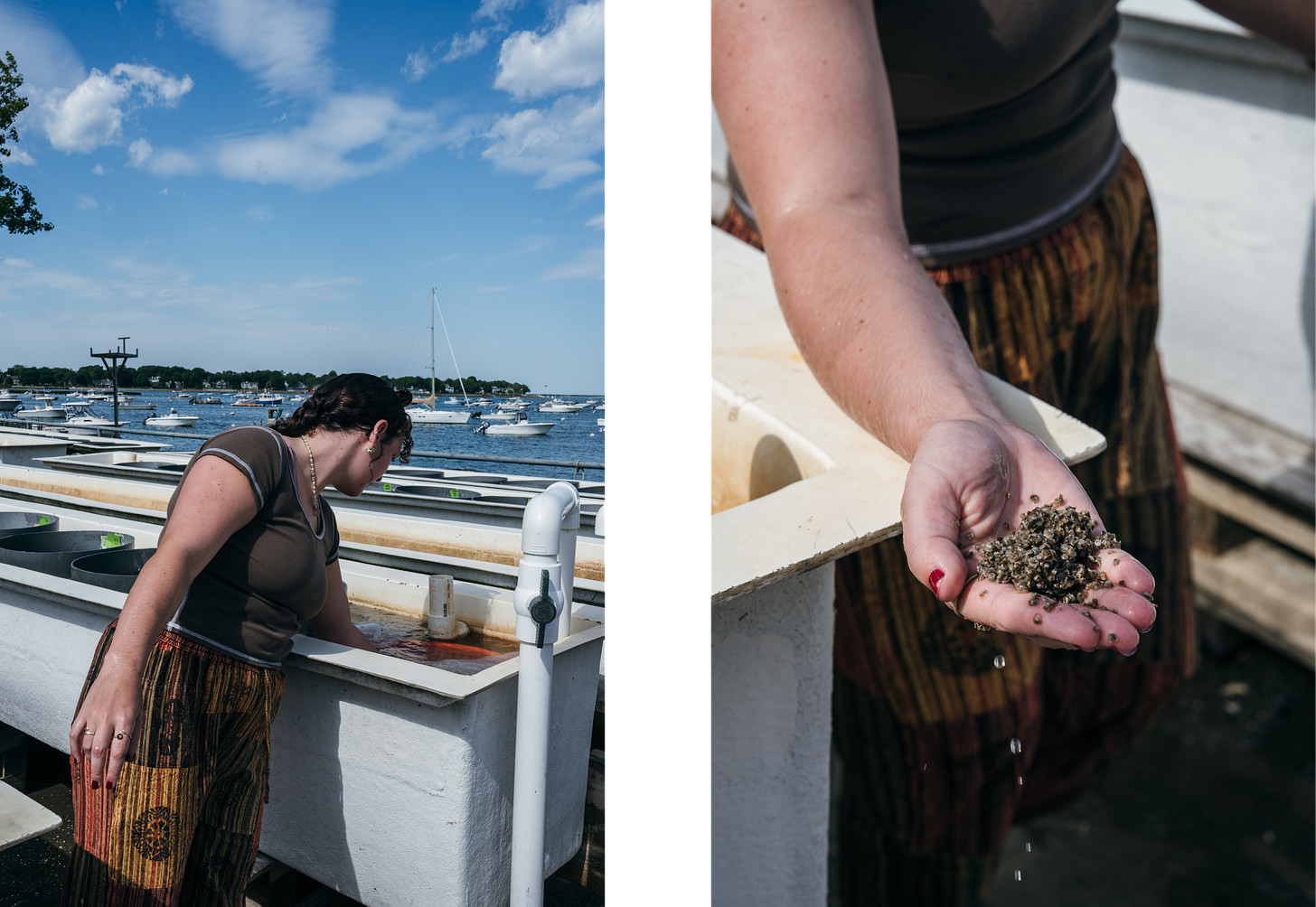
An oyster leads a dreadful but exciting life.
Indeed, his chance to live at all is slim, and if he should survive the arrows of his own outrageous fortune and in the two weeks of his carefree youth find a clean smooth place to fit on, the years afterwards are full of stress, passion and danger. M.F.K Fisher, Consider the Oyster
In the boat I took in Duxbury Bay there were two trays of oysters that were replenished continuously making it the most gluttonous boat excursion I had ever taken. Two kinds were served and shucked rhythmically. Both were grown right there, in Duxbury Bay waters. One was Island Creek, bottom cultured, and the second one Row 34, with a cleaner taste as they are not bottom planted.
The story goes “ Skip has always grown Island Creek seed in bottom planted gear, but one year he dedicated the 34th row of his farm to growing oysters in trays that never touch the bay floor. He was surprised that the oysters took on a very different flavor from the neighboring ICOs, and Row 34s have become a cult favorite amongst our farmers ever since. They’re so special, they even have a restaurant named after them.”
I will not lie and say I could feel the merroir and difference between two oysters of the same species, certainly I haven’t eaten enough oysters to be able to tell (yet). We definitely ate them raw, though. Right there on the boat, next to their habitat and combining the prehistoric move of sliding an oyster into the mouth and eating it full, alive, with the cultured act of dressing it with lemon. Perhaps Fernández-Armesto would be disappointed, but I find them a tad more exciting like this.





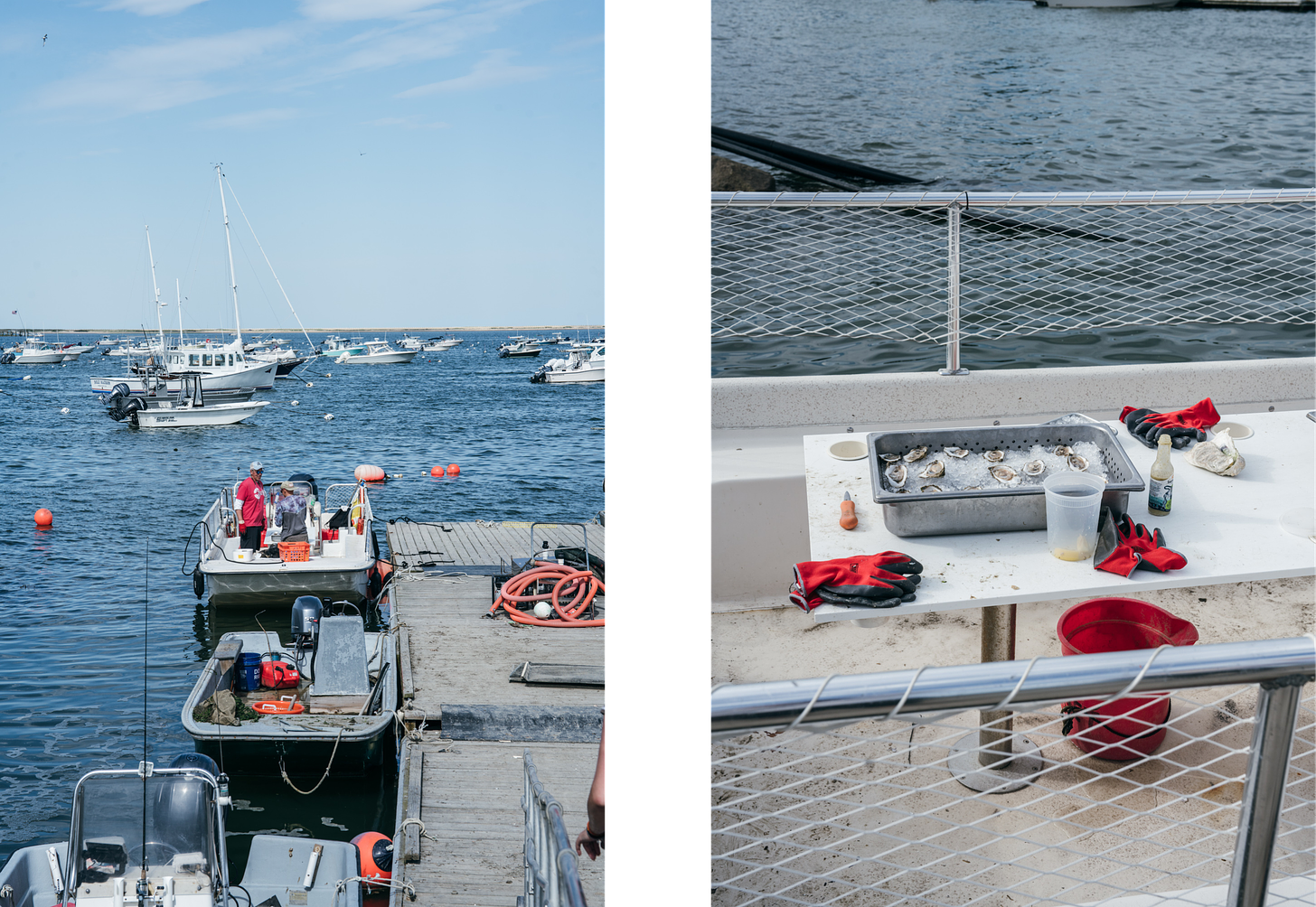

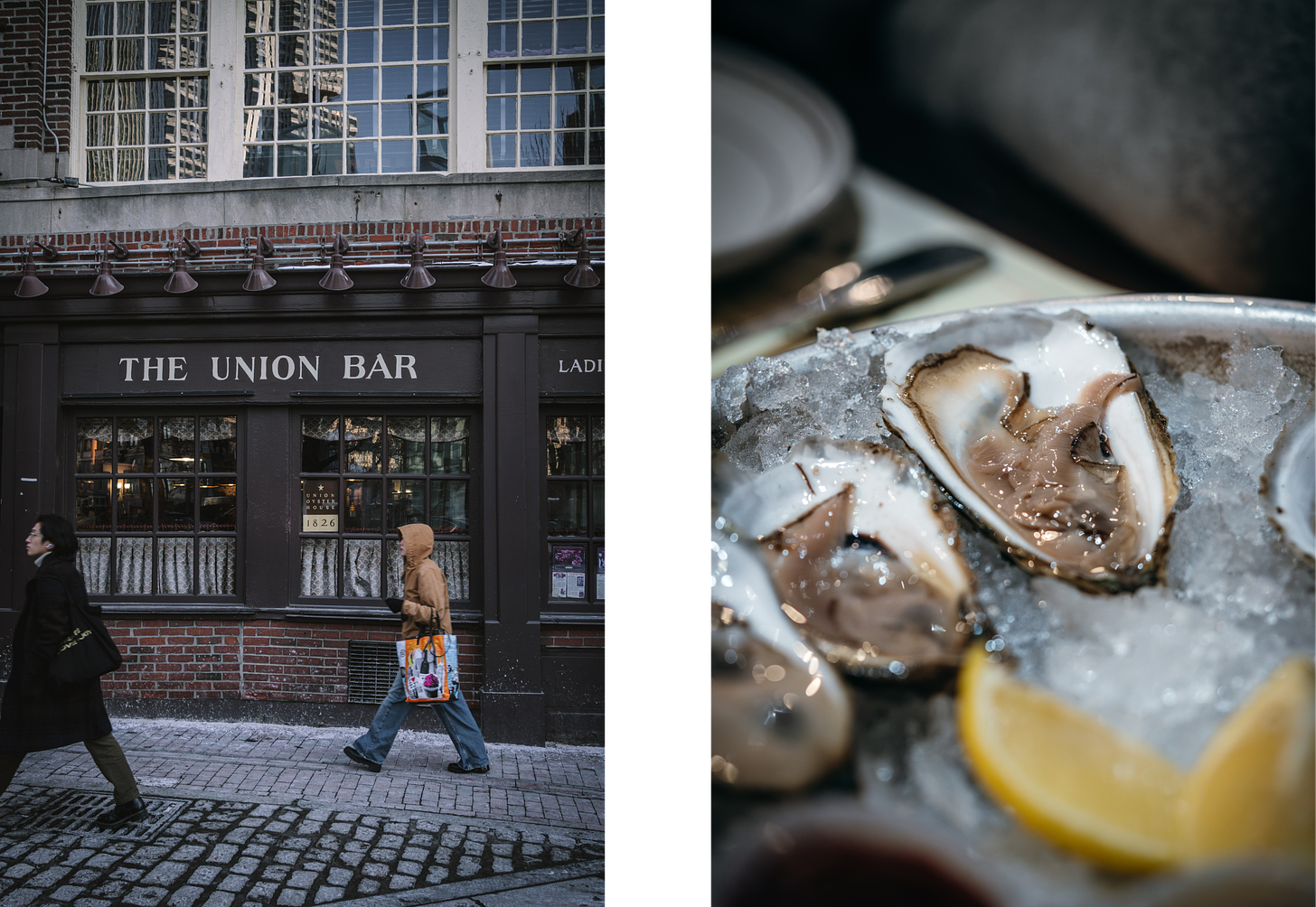

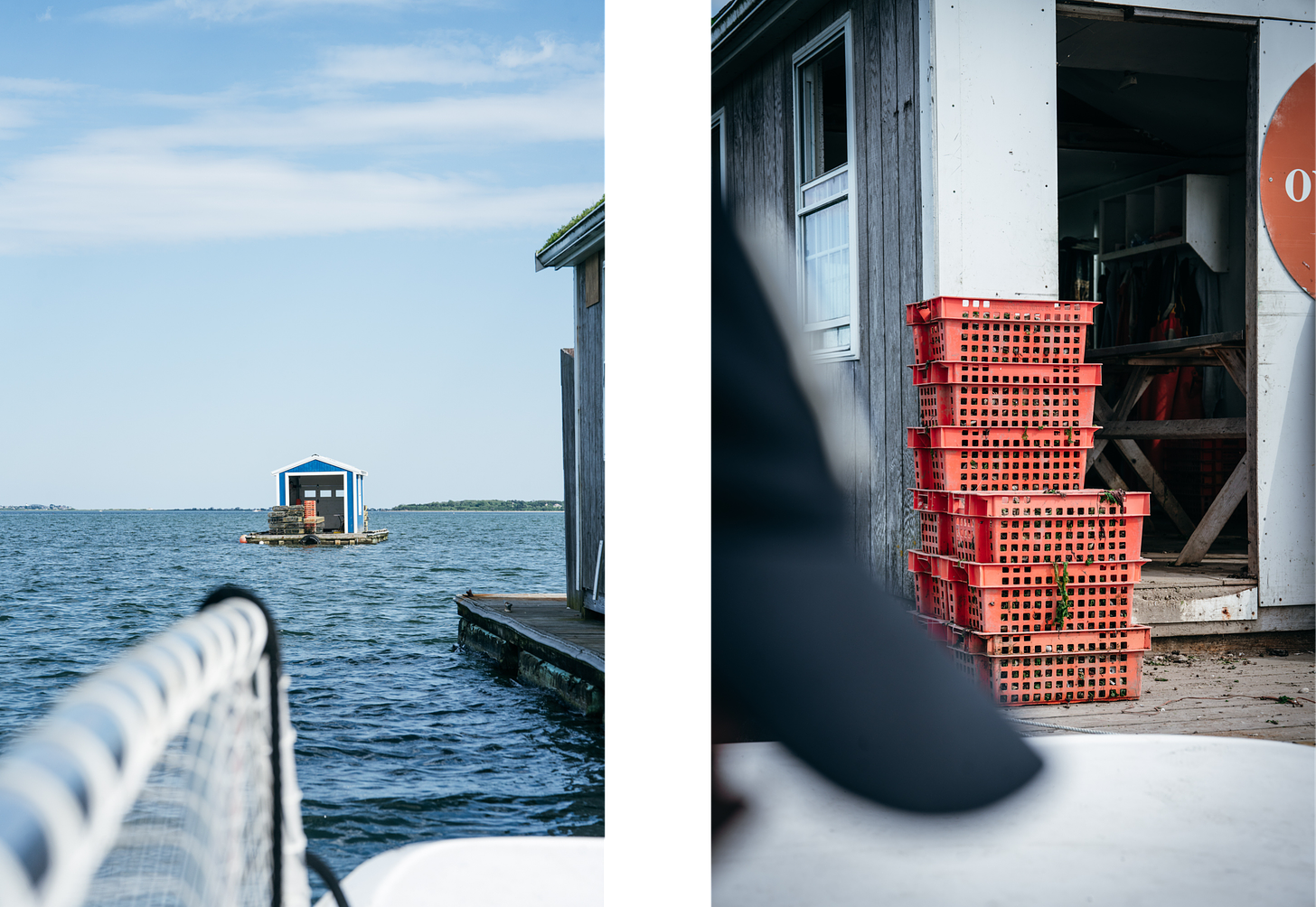
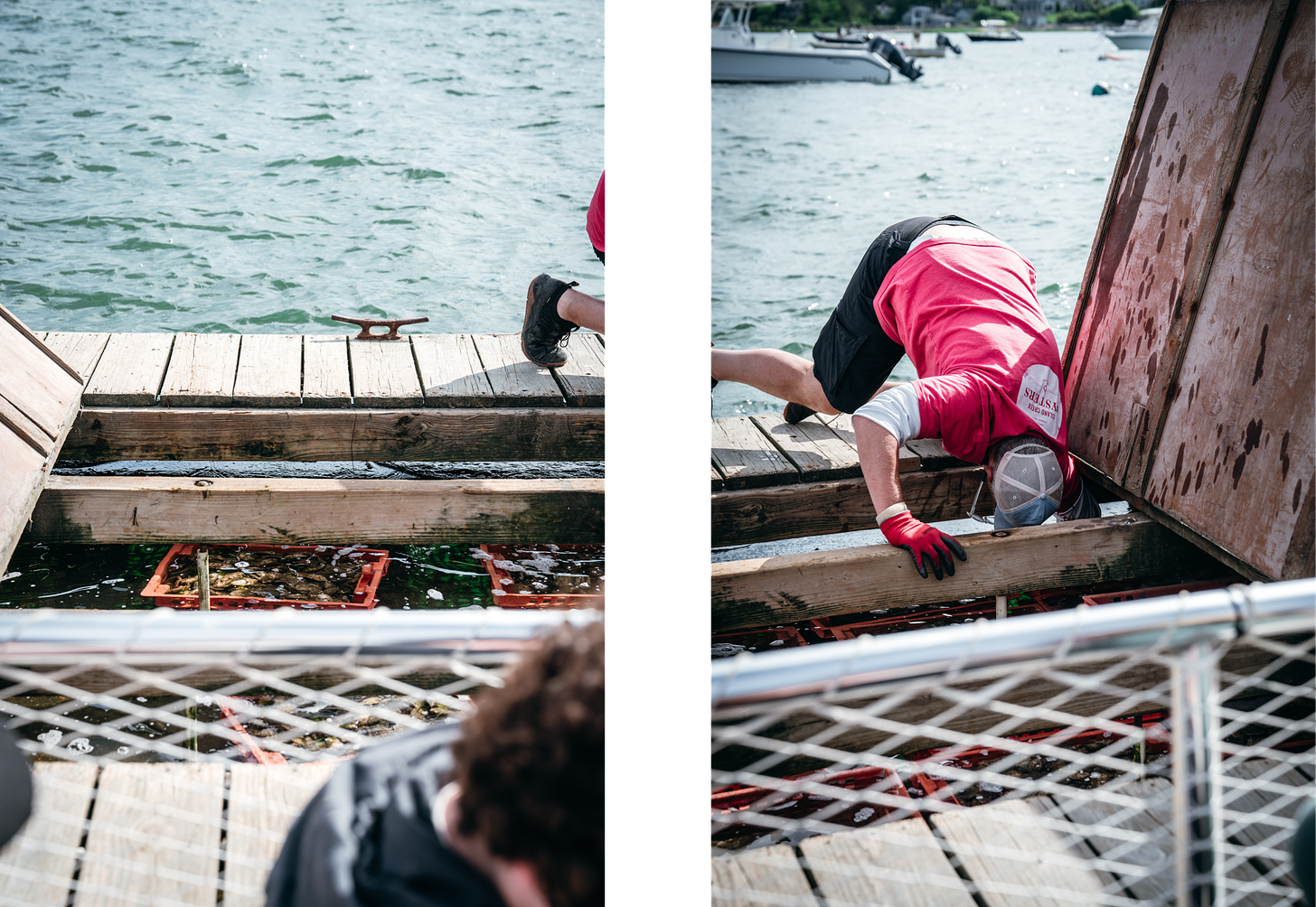
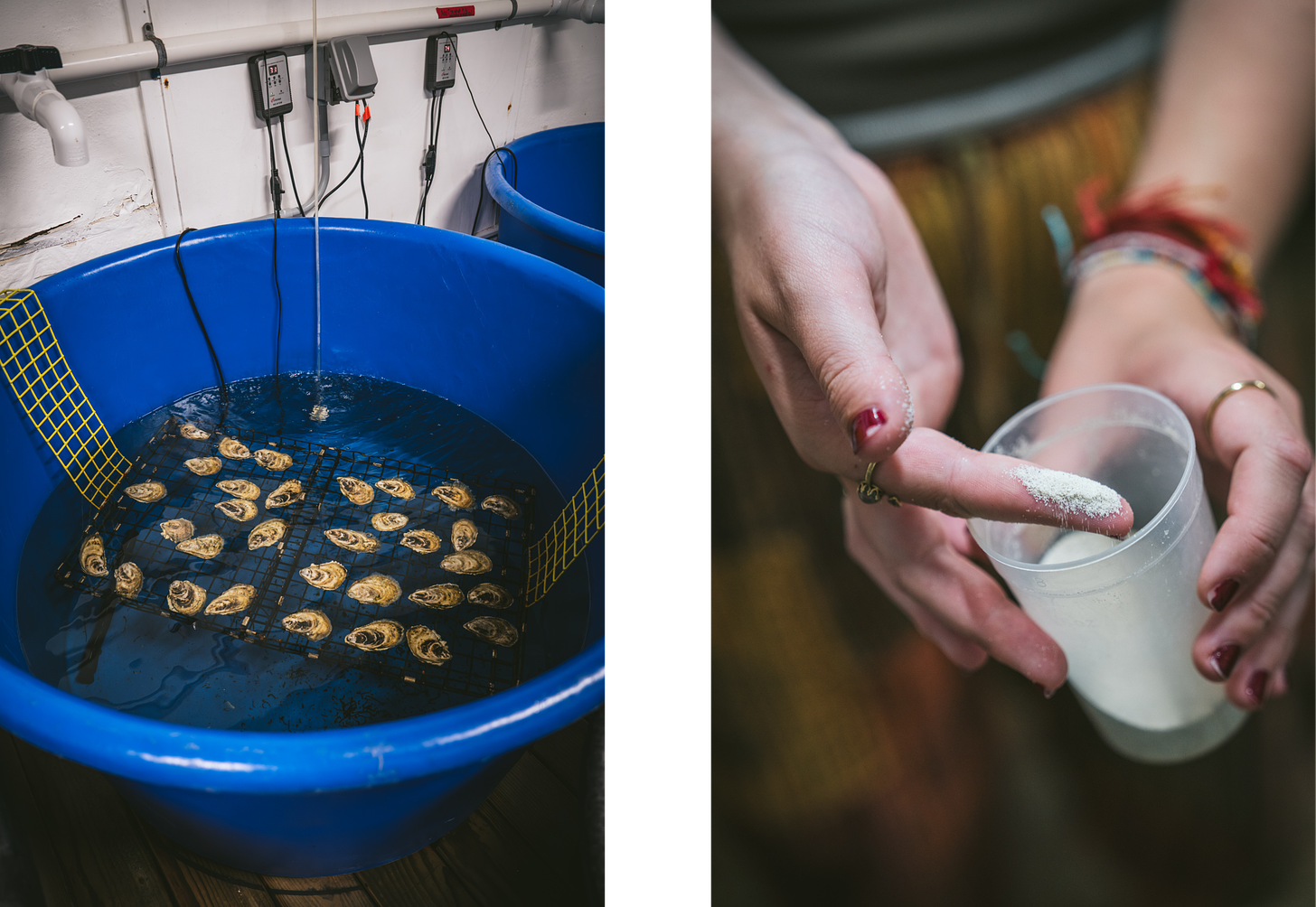
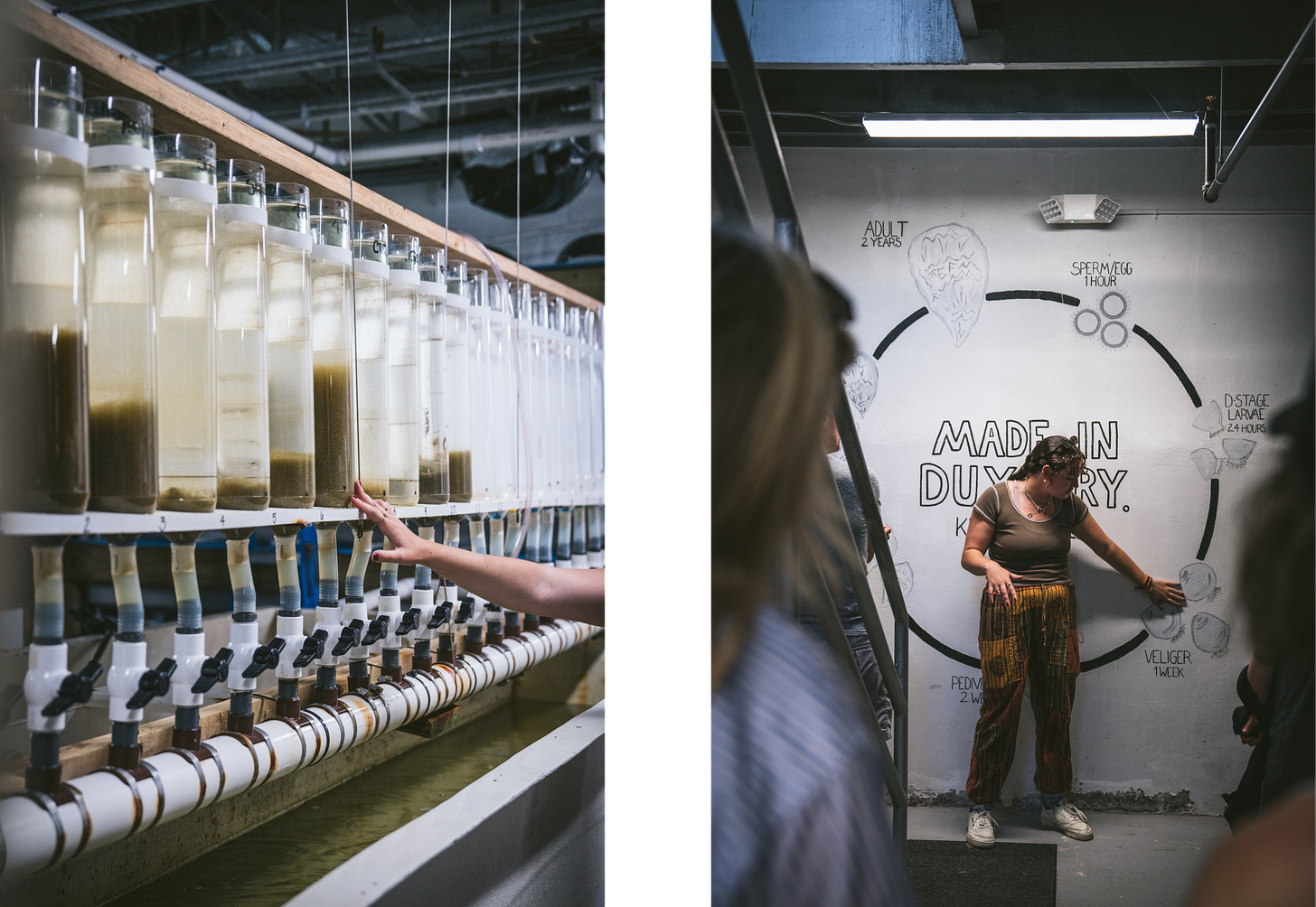
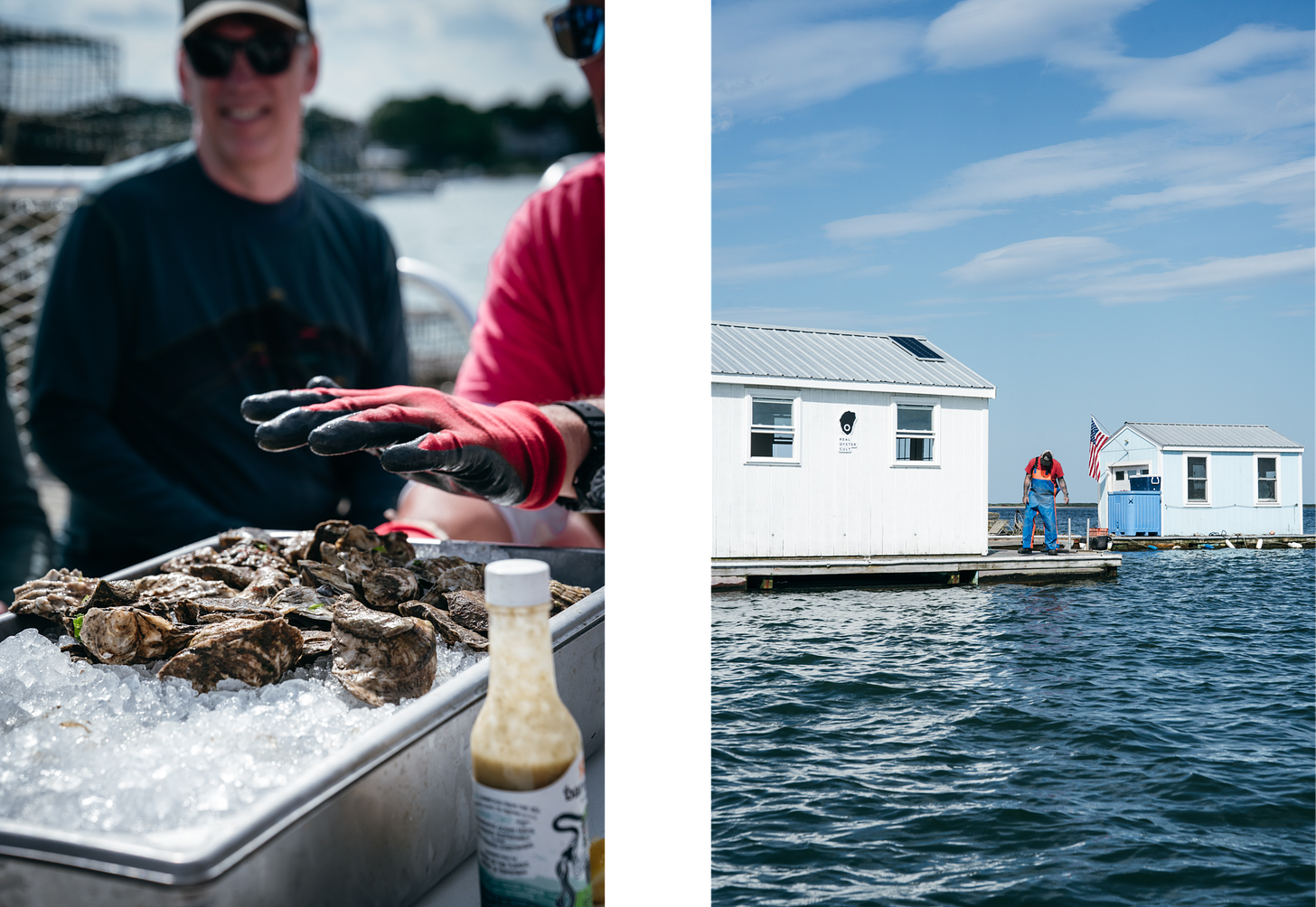
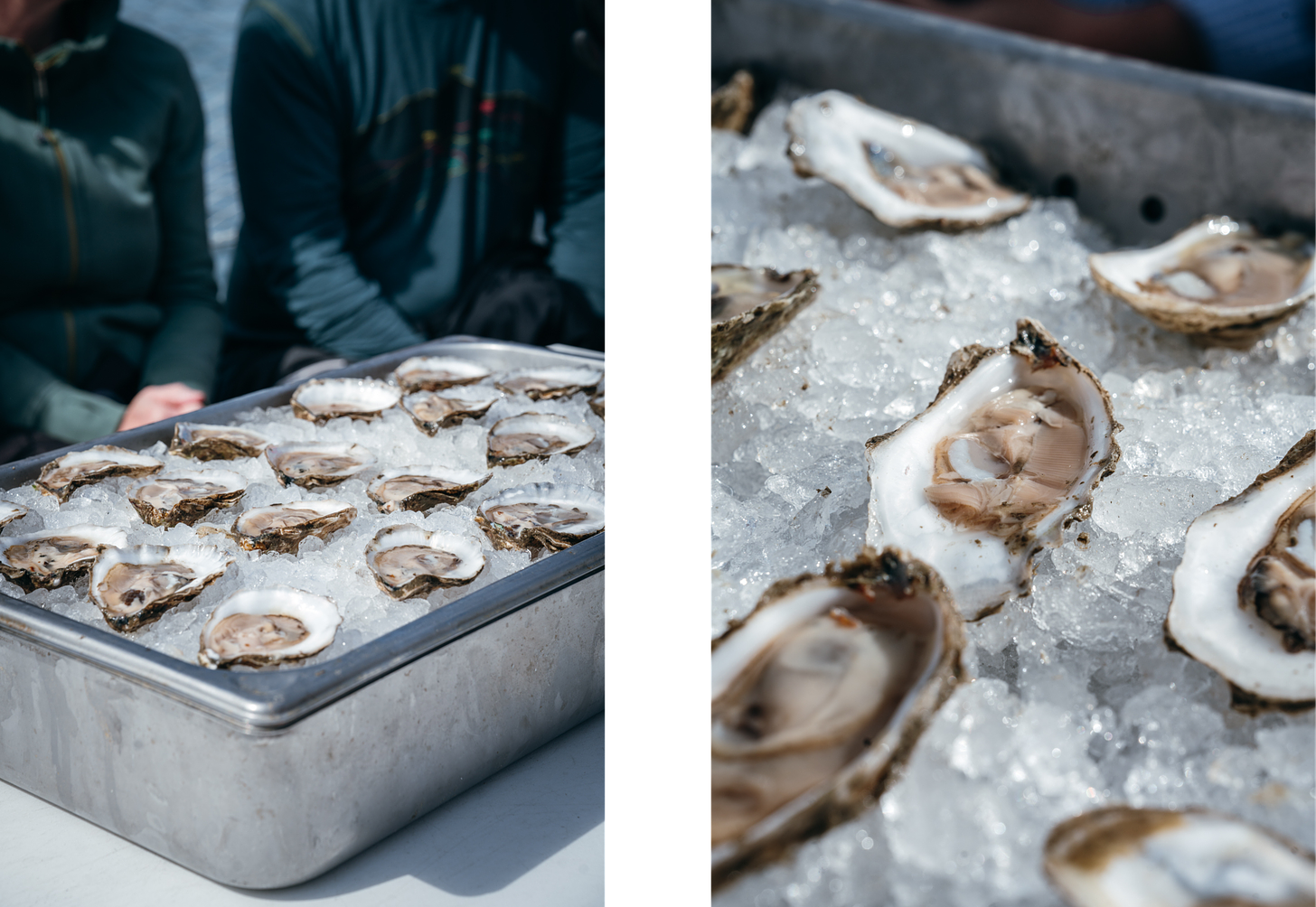
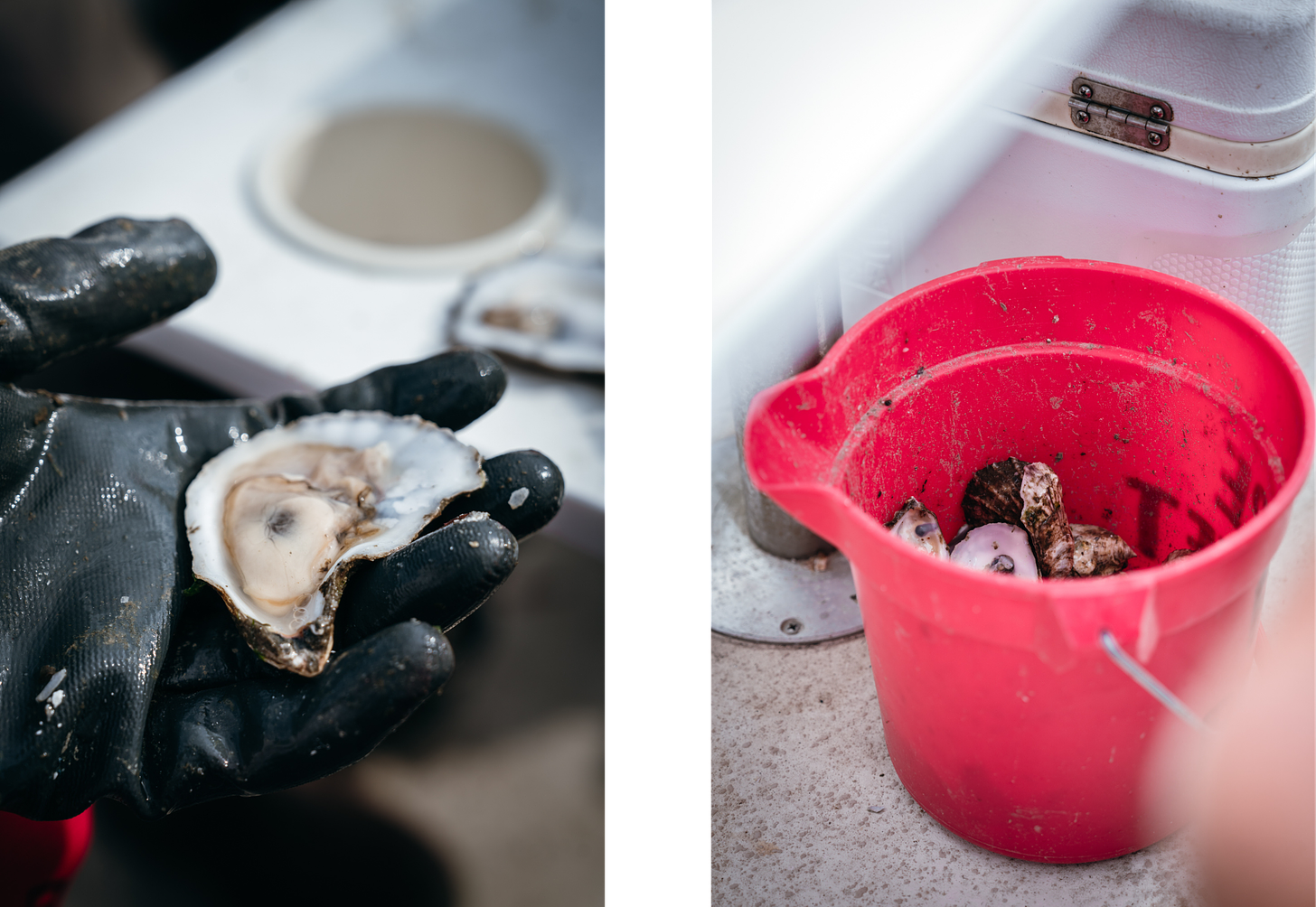
I lived on the Noto Peninsula in Ishikawa, Japan. A town called Anamizu had an oyster festival every winter. The things were massive. Vendors grilled them in their shell until they simmered in seawater and their own juice.
No lemon, shallot, or hot sauce. You just tipped it back. Perfect.
Love everything about this, Elisabet! Beautiful images, and a wonderful essay on the joys and history of oysters. We are so fortunate in MA to have some of the best oysters in the world! (I love Duxbury & ICO, but am partial to Barnstable oysters myself.)